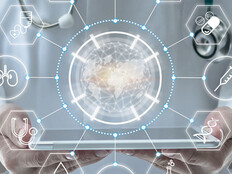This type of care will come in many forms, ranging from passive monitoring of at-risk patients to more active monitoring of high-risk or high-acuity patients. Even patients who present as healthy will benefit, Steinhubl said, as monitoring will help identify conditions they may be developing, though they show no outward symptoms of illness.
And for all patients, ongoing data collection can monitor everyday activities closely linked to health and wellness. “How does exercise help or hurt sleep? How does alcohol affect stress? There’s an impact, but it’s always measured in the doctor’s office, which is an artificial setting,” Steinhubl says.
Healthcare IoT Security Concerns Loom
Despite the promise, concerns persist. Security of IoT devices is one, especially if medical data is being transmitted. Another is quality of service, which matters just as much as increased bandwidth, says Dr. Joseph Kvedar, vice president of connected health at Partners HealthCare.
“If you put in an Amazon order and it doesn’t happen, the world doesn’t stop,” he says. “But if it’s your pacemaker, it’s a different matter.”
A third challenge has nothing to do with technology. Through fee-for-service models, Steinhubl says, healthcare has built an “infrastructure” geared to getting people into the hospital.
However, the practice of medicine is increasingly designed to support team-based care complemented by technology, Kvedar says. “We’ll get to a point where we have layers of different activity,” he says. “Chatbots, person-to-person messaging, IoT device data transmissions, phone calls and video calls.”
There will still be a lot of interaction in an office and a lot of face-to-face healthcare, but also a lot of asynchronous activity, Kvedar says.
“We’re finding the right utility for IoT in the clinical process.”










